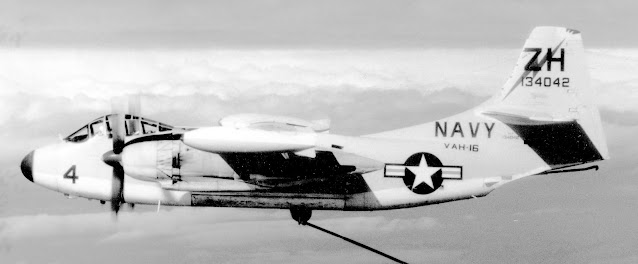The AJ Savage, the U.S. Navy's first carrier-based bomber that could carry the 10,000# Mk 4 nuke was not only big (humongous, really), folding it required so much time and effort that it wasn't done unless the Savage was a "dud" that had to be taken down into the hangar (see http://tailhooktopics.blogspot.com/2022/10/aj-savage-wing-and-fin-fold.html).
The hose reel and drogue-deployment mechanism was mounted on the back of the tank (the drogue is in the retracted position):
A small opening was provided in the bomb bay doors so the drogue mechanism could be deployed below the fuselage (because of the size of the drogue, the doors had to be opened to lower the drogue and then closed again).
The right side of the hose reel (the drogue is not present):
Note that the fuel from the tank to the reel is provided by a line on the left side of the tank that extends from its bottom up and over the reel, attached to it from the side (3).
The hose was fed down from the reel to the front side of the big pulley on the drogue mechanism and then aft to the drogue itself.
The drogue at this point was a metal cone.
This is a prototype of the external mechanism being tested on an XAJ-1:
The operation of the refueling system was the responsibility of the rearward facing crewman on the AJ-2:
At least one AJ-1 was equipped for inflight refueling and assigned to NATC but I don't know where these panels were located on it (the AJ-1's third crewman's position was in the compartment below the flight deck).
I don't have any three-view or station drawings of the refueling mechanism or the opening in the bomb bay doors but in the event that a modeler feels the need to add them to a kit, these pictures will help locate and size them.
















































.jpg)



